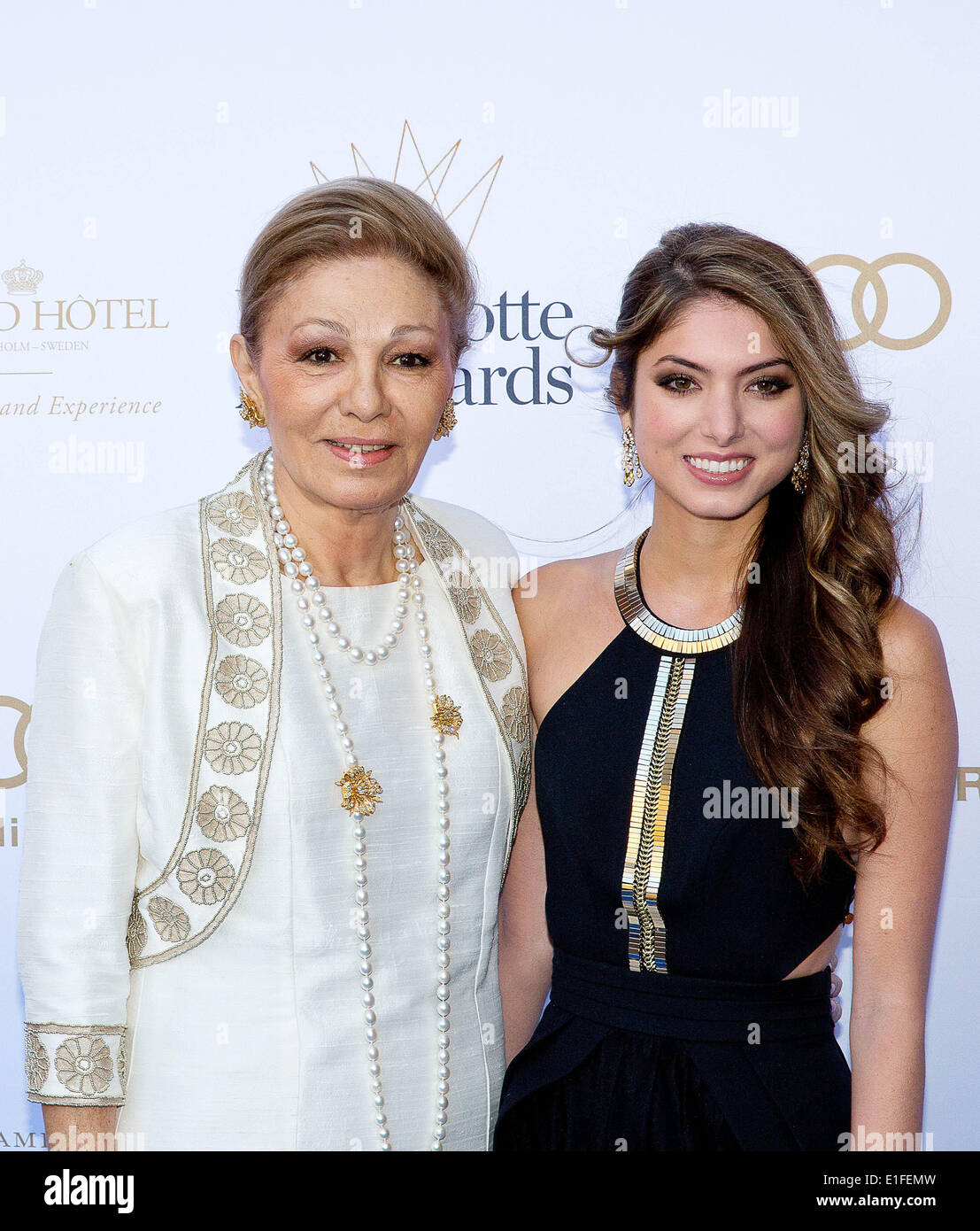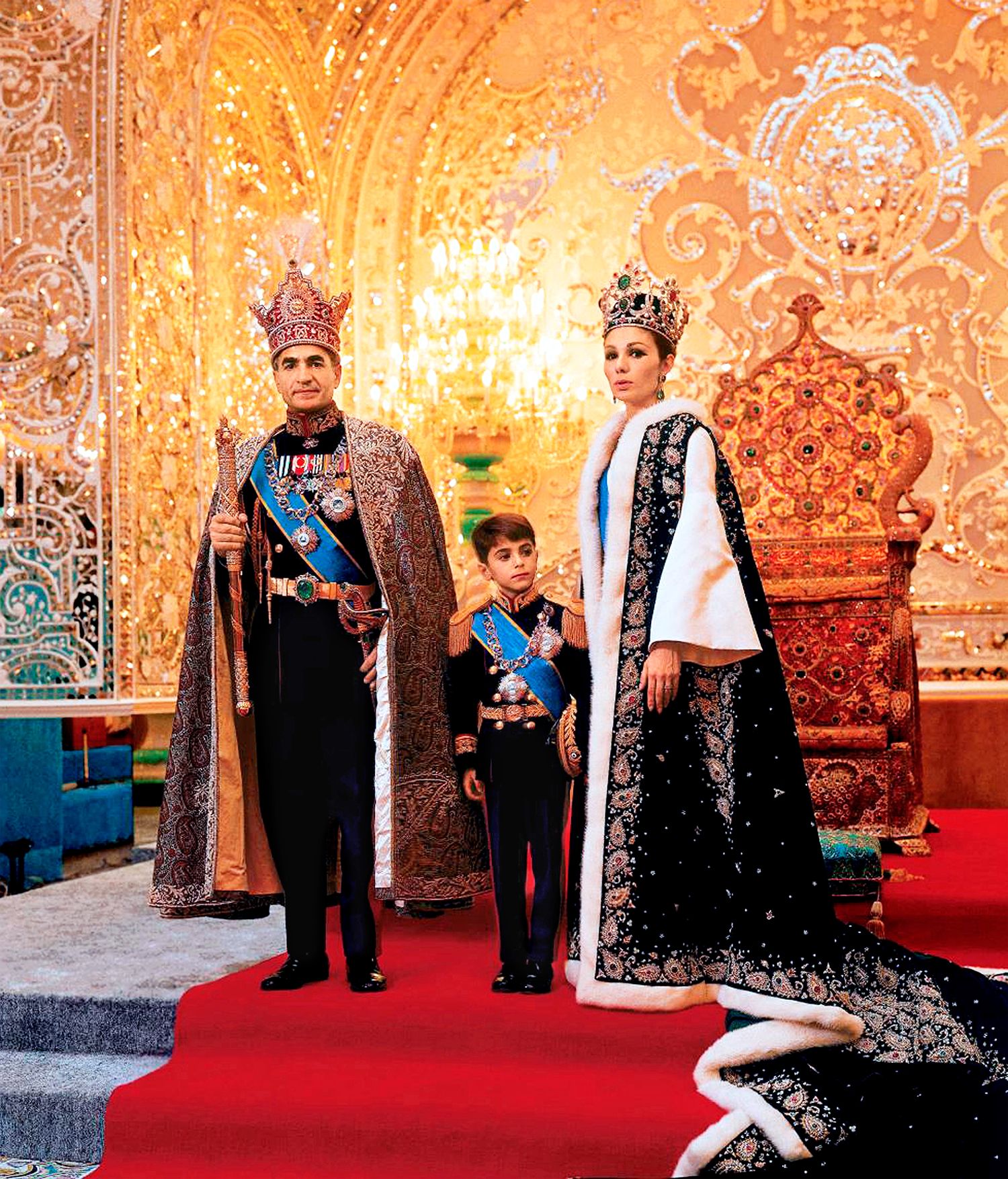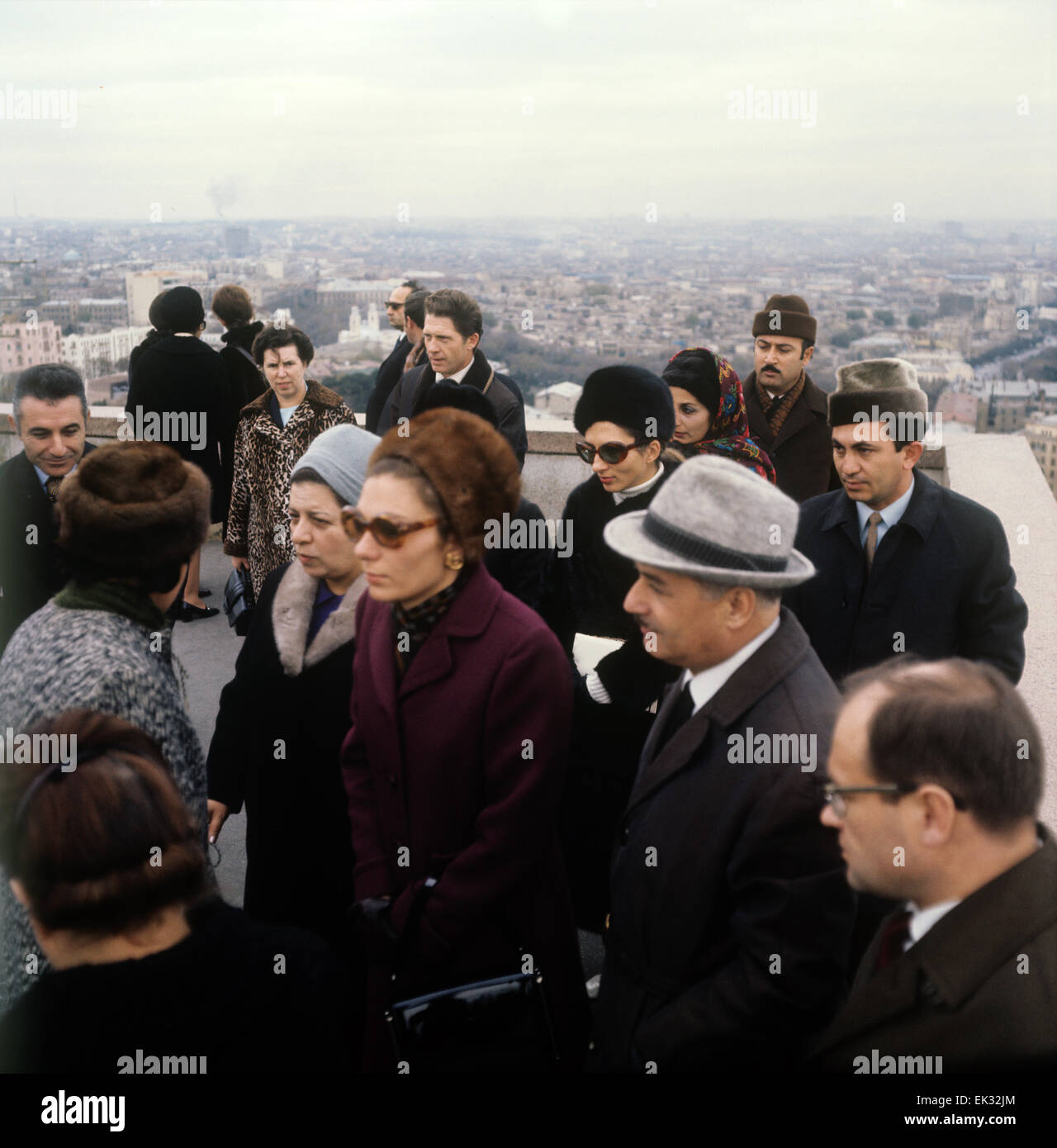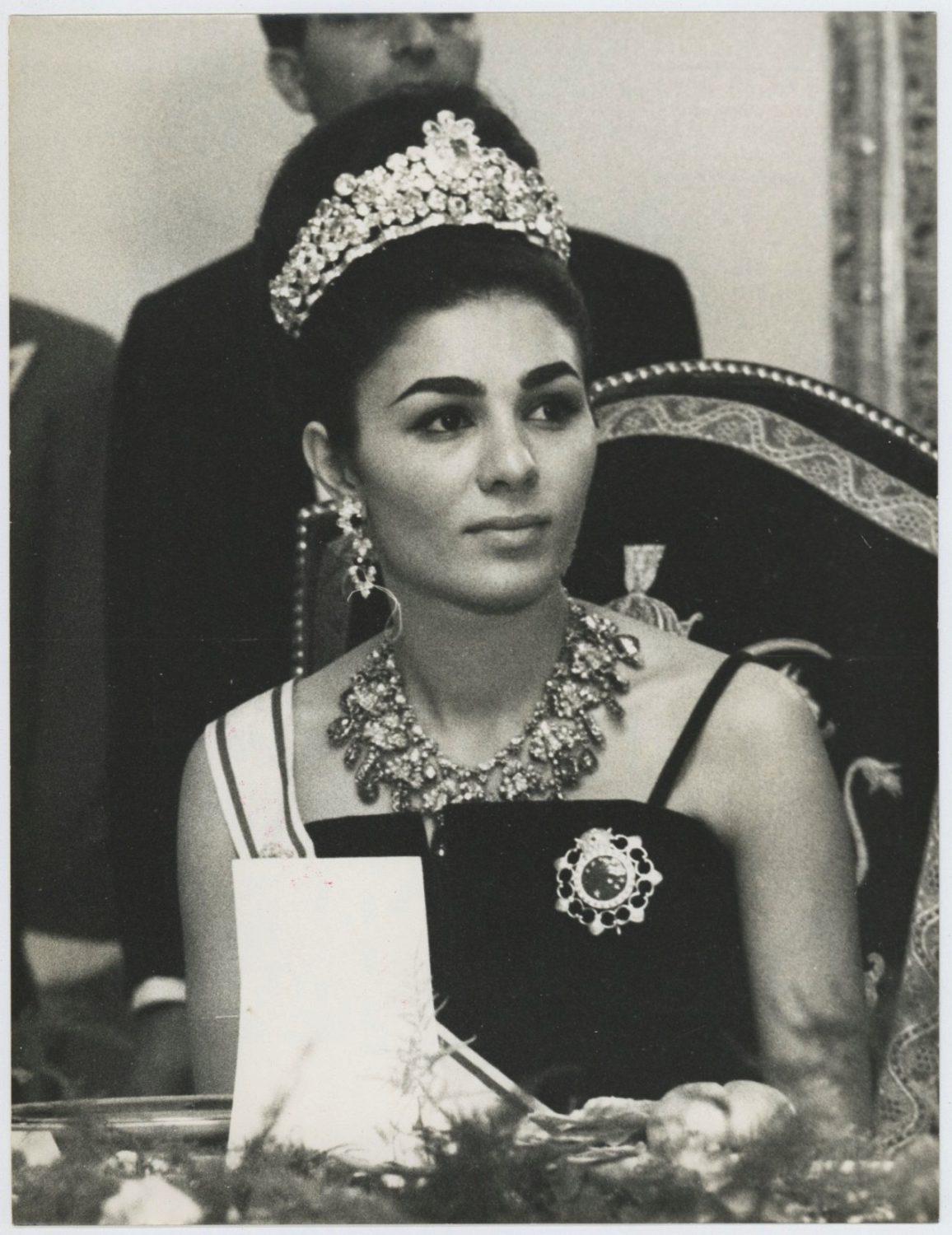Farah Pahlavi: The Former Empress Of Iran And Advocate For Iranian Culture
Editor's Notes: "Farah Pahlavi: The Former Empress Of Iran And Advocate For Iranian Culture" have published today date". Give a reason why this topic important to read.
Farah Pahlavi, the former Empress of Iran, played a significant role in promoting Iranian culture and heritage on the global stage. Her advocacy and efforts helped preserve and showcase the rich tapestry of Iran's ancient traditions, arts, and cultural achievements.

Former Persian Empress Farah Diba-Pahlavi (L) and her granddaughter - Source www.alamy.com
As the wife of the last Shah of Iran, Mohammad Reza Pahlavi, Farah Pahlavi had a unique platform to highlight Iranian culture. She utilized this opportunity to establish several cultural institutions, sponsor art exhibitions, and support educational initiatives aimed at preserving and promoting Iran's cultural legacy.
Transition to main article topics
FAQs by "Farah Pahlavi: The Former Empress Of Iran And Advocate For Iranian Culture"
FAQs By Farah Pahlavi: The Former Empress Of Iran And Advocate For Iranian Culture
This comprehensive Q&A section provides crucial information related to the life, work, and legacy of Empress Farah Pahlavi, a renowned figure dedicated to the preservation and promotion of Iranian culture. These FAQs aim to address common questions and misconceptions, offering a deeper understanding of her contributions to the arts, humanitarianism, and Iranian society.

Empress Farah Of Iran Clearance | www.simpleplanning.net - Source www.simpleplanning.net
Question 1: What are some of the key highlights of Farah Pahlavi's early life and education?
Born on October 14, 1938, in Tehran, Iran, Farah Diba Pahlavi received her early education at the Jeanne d'Arc School in Tehran. She went on to study architecture in Paris, France, at the École Spéciale d'Architecture, where she excelled in her studies and developed a deep appreciation for art and design.
Question 2: How did Farah Pahlavi's marriage to the Shah of Iran impact her role and influence?
Empress Farah Pahlavi's marriage to Mohammad Reza Pahlavi, the Shah of Iran, in 1959, significantly elevated her public profile and provided her with a platform to advocate for various causes close to her heart. As the Shahbanou (Empress), she became an influential figure in Iranian society, using her position to promote education, healthcare, and cultural preservation.
Question 3: What are some of the notable achievements of Farah Pahlavi during her time as Empress?
Empress Farah Pahlavi's tenure as Empress was marked by her dedication to social and cultural development. She was instrumental in establishing the Farah Pahlavi University, Iran's first private university, which focused on providing higher education opportunities for women. Additionally, she played a crucial role in the founding of the Tehran Museum of Contemporary Art, which showcased influential works of Iranian and international artists.
Question 4: How did Empress Farah Pahlavi's advocacy for Iranian culture extend beyond the borders of Iran?
Empress Farah Pahlavi's commitment to Iranian culture transcended national boundaries. She actively participated in international cultural events, representing Iran and promoting its rich artistic heritage on a global stage. Her efforts contributed to fostering a greater appreciation for Iranian art and culture worldwide.
Question 5: What were some of the challenges faced by Farah Pahlavi during and after her time as Empress?
Empress Farah Pahlavi's journey was not without its challenges. During the Iranian Revolution of 1979, she faced immense pressure and was forced to leave Iran with her family. In exile, she continued to advocate for the Iranian people and remained a vocal critic of human rights violations in her home country.
Question 6: How is Farah Pahlavi's legacy being preserved and celebrated today?
Empress Farah Pahlavi's legacy as a symbol of Iranian culture and humanitarianism continues to inspire. The Farah Pahlavi Foundation, established in 2003, carries on her mission of promoting cross-cultural understanding and supporting educational initiatives. Additionally, her life and work are the subject of numerous publications, exhibitions, and documentaries, ensuring that her contributions are remembered and honored.
In conclusion, Empress Farah Pahlavi's unwavering dedication to Iranian culture, education, and humanitarian causes has left an enduring mark on the world. Her legacy continues to inspire and motivate individuals and organizations working towards a better future for Iran.
Transition to the next article section: Farah Pahlavi's advocacy for Iranian culture extended beyond the borders of Iran, as she actively participated in international cultural events and represented Iran's rich artistic heritage on a global stage.
Tips from Farah Pahlavi: The Former Empress Of Iran And Advocate For Iranian Culture
Empress Farah Pahlavi has dedicated her life to preserving and promoting Iranian culture on the global stage. Her tireless efforts have earned her the respect and admiration of the Iranian people and international community alike. Her insights into Iranian culture and society offer valuable guidance for those seeking to foster cultural understanding and appreciation.
Tip 1: Embrace the Richness and Diversity of Iranian Culture
Iran boasts a rich tapestry of cultural traditions and expressions, from its ancient historical sites to its contemporary art and literature. To fully appreciate the beauty and depth of Iranian culture, one must embrace its diversity and explore its various facets.
Tip 2: Learn About Iran's History and Heritage
Understanding Iran's history and heritage is key to comprehending its culture. Explore the country's ancient civilizations, such as the Achaemenid and Sassanid empires, and study its rich literary and artistic legacy.
Tip 3: Engage with Iranian Art and Literature
Iran is renowned for its stunning art and literature. Delve into the world of Iranian painting, sculpture, and architecture. Read the works of renowned Iranian poets and authors to gain insights into the Iranian psyche and worldview.
Tip 4: Travel and Experience Iran's Hospitality
The best way to appreciate Iranian culture is to visit the country itself. Iranians are renowned for their hospitality and warmth. Travel to Iran to experience its vibrant cities, scenic landscapes, and cultural treasures.
Tip 5: Support Iranian Artists and Cultural Initiatives
Preserving and promoting Iranian culture requires the support of the global community. Attend Iranian cultural events, support Iranian artists, and engage with organizations dedicated to preserving Iran's cultural heritage.
By embracing these tips, we can foster a deeper understanding and appreciation of Iranian culture, contributing to a more inclusive and culturally diverse world.
Farah Pahlavi: The Former Empress Of Iran And Advocate For Iranian Culture
Farah Pahlavi, the former Empress of Iran and notable advocate for Iranian culture, embraced diverse roles throughout her life. Her journey encompasses aspects of royalty, diplomacy, and philanthropy, leaving a significant imprint on Iran's cultural heritage.
- Queen: As the wife of Mohammad Reza Pahlavi, Farah Pahlavi played a prominent role in the Iranian monarchy, supporting her husband and representing the country.
-

Baku. Azerbaijani SSR. USSR. Empress Farah Pahlavi of Iran and her - Source www.alamy.com - Culture: She championed the preservation and promotion of Iranian culture, establishing the Tehran Museum of Contemporary Art and supporting numerous cultural initiatives.
- Education: Farah Pahlavi's advocacy extended to education, particularly for women. She founded and supported schools and programs aimed at improving educational opportunities.
- Philanthropy: Her philanthropic endeavors focused on social welfare, healthcare, and disaster relief, establishing the Farah Pahlavi Charitable Foundation to support these causes.
- Diplomacy: As an international figure, Farah Pahlavi represented Iran on the world stage, promoting cultural exchange and fostering international understanding.
- Advocate: Beyond her official roles, Farah Pahlavi has consistently advocated for human rights, democracy, and the empowerment of women, both in Iran and globally.
These six key aspects highlight the multifaceted contributions of Farah Pahlavi to Iranian culture and society. Her legacy as a cultural icon and advocate continues to inspire and influence future generations.
Farah Pahlavi: The Former Empress Of Iran And Advocate For Iranian Culture
Farah Pahlavi, the former Empress of Iran, is renowned for her contributions to Iranian culture. As the consort of the last Shah of Iran, Mohammad Reza Pahlavi, she played a significant role in promoting Iranian art, literature, and music. Farah's passion and dedication towards preserving Iranian heritage have left a lasting impact on the cultural landscape of Iran. She established the Farah Pahlavi Museum in Tehran, showcasing Iran's rich artistic traditions. Farah's advocacy for Iranian culture extended beyond Iran's borders; she represented her country at numerous international events, sharing Iran's cultural richness with the world.

Iran Teheran Shahbanu Farah Pahlavi Vintage Farah Pahlavi Persian فرح - Source www.ebay.ca
Farah Pahlavi's work has played a crucial role in promoting cross-cultural understanding and appreciation for Iranian culture. Her efforts have contributed to breaking stereotypes and fostering a more nuanced perspective on Iran. By showcasing the diverse and vibrant aspects of Iranian culture, Farah has challenged misconceptions and encouraged dialogues across cultural boundaries.
Through her unwavering commitment to preserving and promoting Iranian culture, Farah Pahlavi serves as an inspiring example of the power of cultural diplomacy. She has demonstrated that cultural exchange can be a catalyst for fostering mutual respect, breaking down barriers, and building bridges between nations. Farah's legacy continues to inspire future generations to embrace their cultural heritage and contribute to the tapestry of global culture.
Conclusion
Farah Pahlavi's unwavering commitment to Iranian culture has made her a revered figure both in Iran and internationally. Her patronage of the arts, her establishment of the Farah Pahlavi Museum, and her representation of Iranian culture abroad have had a profound impact on the preservation and promotion of Iran's rich heritage. Through her tireless efforts, Farah Pahlavi has not only fostered cultural understanding but also challenged stereotypes and promoted cross-cultural dialogues. Her legacy continues to inspire and empower future generations to embrace their cultural identities and contribute to the global tapestry of cultural exchange.
Farah Pahlavi's work serves as a reminder of the transformative power of cultural diplomacy. By embracing our shared cultural heritage, we can break down barriers, build bridges between nations, and create a more harmonious and interconnected world. Farah's example inspires us to value and celebrate the diversity of human creativity and expression, recognizing that cultural exchange is essential for progress, understanding, and mutual respect.
